Fiberglass is a widely used material that is applied in many areas including different repairing works in our homes. That is why people often ask how to remove fiberglass from the skin since it happens quite often.
If you keep on reading, you will find detailed instructions on how to get rid of the fiberglass at home without causing harm to yourself, safe and quick.
Don’t worry according to the Illinois Department Of Public Health the fiberglass will not lead to the long term effects.
What Is Fiberglass?
First of all, let’s learn a bit more about this material since not all of us know what in fact it is.
[expert_review_poll id=”6934″ params=”JTdCJTIydGl0bGUlMjIlM0ElMjJIYXZlJTIweW91JTIwZXZlciUyMGhhZCUyMHRvJTIwZ2V0JTIwZmliZXJnbGFzcyUyMG91dCUyMG9mJTIwc2tpbiUzRiUyMiUyQyUyMnNob3dfdGl0bGUlMjIlM0ElMjIxJTIyJTJDJTIyc2hvd19jb3VudCUyMiUzQSUyMjAlMjIlMkMlMjJzdHlsZSUyMiUzQSUyMmxpZ2h0LTElMjIlMkMlMjJjb2xvciUyMiUzQSUyMmJsdWUtMSUyMiUyQyUyMm11bHRpcGxlJTIyJTNBZmFsc2UlMkMlMjJhbnN3ZXJzJTIyJTNBJTVCJTdCJTIyaWQlMjIlM0ElMjIxJTIyJTJDJTIydGV4dCUyMiUzQSUyMlllcyUyQyUyMG9uY2UlMjIlN0QlMkMlN0IlMjJpZCUyMiUzQSUyMjIlMjIlMkMlMjJ0ZXh0JTIyJTNBJTIyWWVzJTJDJTIwbWFueSUyMHRpbWUlMjIlN0QlMkMlN0IlMjJpZCUyMiUzQSUyMjMlMjIlMkMlMjJ0ZXh0JTIyJTNBJTIyTm8lMkMlMjBuZXZlciUyMiU3RCU1RCU3RA==”]
One could probably hear this word quite often but does anyone know what kind of material is this?

Fiberglass is a sort of plastic that was reinforced with the usage of glass fibers.
This material can have a shape of flat sheets, woven fabric or randomly arranged material.
To find out why it is so popular, check out the major qualities of fiberglass which are the following:
- It is much cheaper than carbon fiber
- It also has a higher rate of flexibility
- This material is chemically inert
- Its fiber is much stronger than metals
- It has no magnetic traits
- It has no conductive abilities
- This material is transparent to electromagnetic radiation
- It can be shaped into many different and complicated forms
All these traits make fiberglass a widely used material. No wonder that fiberglass splinter can sometimes get underneath the human skin!
It is important to get fiberglass out of the skin as fast as only possible since its tiny fibers cause extreme irritation.
Where We Use Fiberglass
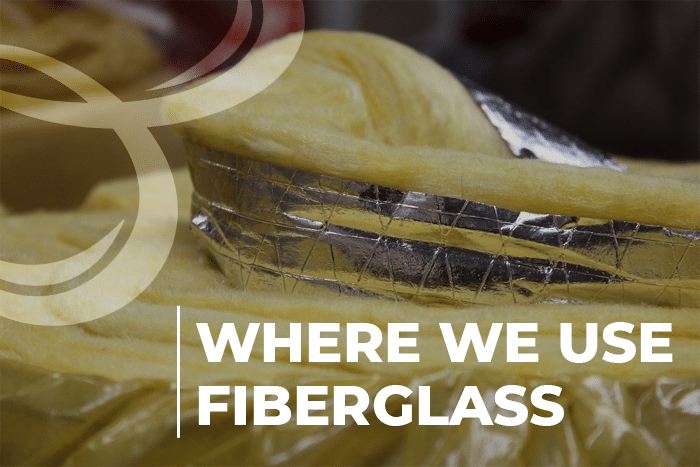
Due to its useful qualities, fiberglass is an irreplaceable material in many industries, for instance, aircraft, boatbuilding, and cars-making. It has significant anti-corrosion qualities, besides, its anti-slippery abilities are also very high which is essential in these areas of use.
This material is also widely applied in roofing, cladding, pipes, and hot tubs. Fiberglass is widely applied in external door skin, too. Since fiberglass can be molded in almost any shape and it is very flexible, it suits well different industries where such material is needed.

In addition, since it is rotting-proof and thermally conductive, this material is very demanded in piping and other spheres of that sort.
Among the other spheres of the appliance are car washes, the beverage, and the chemical industry, food processing, docks, and marina-making, mining, etc.
Is Fiberglass Dangerous To Human?

Such a question appears quite predictably, especially if one has never worked with this material directly.
[expert_review_poll id=”6935″ params=”JTdCJTIydGl0bGUlMjIlM0ElMjJIb3clMjBkaWQlMjB5b3UlMjBnZXQlMjBmaWJlcmdsYXNzJTIwb3V0JTIwb2YlMjBza2luJTNGJTIyJTJDJTIyc2hvd190aXRsZSUyMiUzQSUyMjElMjIlMkMlMjJzaG93X2NvdW50JTIyJTNBJTIyMCUyMiUyQyUyMnN0eWxlJTIyJTNBJTIybGlnaHQtMSUyMiUyQyUyMmNvbG9yJTIyJTNBJTIyYmx1ZS0xJTIyJTJDJTIybXVsdGlwbGUlMjIlM0FmYWxzZSUyQyUyMmFuc3dlcnMlMjIlM0ElNUIlN0IlMjJpZCUyMiUzQSUyMjElMjIlMkMlMjJ0ZXh0JTIyJTNBJTIySSUyMHVzZWQlMjB0YXBlJTIwdG8lMjBnZXQlMjBmaWJlcmdsYXNzJTIwb2ZmJTIwdGhlJTIwc2tpbiUyMiU3RCUyQyU3QiUyMmlkJTIyJTNBJTIyMiUyMiUyQyUyMnRleHQlMjIlM0ElMjJJJTIwdXNlZCUyMG5lZWRsZSUyMGFuZCUyMHR3ZWV6ZXJzJTIyJTdEJTJDJTdCJTIyaWQlMjIlM0ElMjIzJTIyJTJDJTIydGV4dCUyMiUzQSUyMkklMjBkaWRuJUUyJTgwJTk5dCUyMGhhdmUlMjB0byUyMGdldCUyMGZpYmVyZ2xhc3MlMjBvdXQlMjBvZiUyMHNraW4lMjIlN0QlNUQlN0Q=”]
Is fiberglass dangerous when it ends up on the skin?
Let’s figure it out.
Since the fibers of this material are extremely fine, they easily penetrate our skin when we have direct contact.
The second fiberglass splinters penetrate the skin (yes, they won’t just stick to its surface!), they start causing irritation, pain and sometimes even rash!

However, it’s not only our skin that is threatened. Eyes are also a risk-zone, besides, the splinters can easily be breathed in causing the irritation of the nose and throat or even end up in the stomach.
Can fiberglass splinters cause any serious health problems?
If the problem was noticed instantly and proper cure and treatment took place, then, after the removal of the intruders, one will soon get well.
However, in case the intruders were not extracted or it was done improperly, such negligence may lead to chronic skin and respiratory system diseases, for instance, asthma or bronchitis.
Tips On How to Remove Fiberglass From Skin
So what do we do if those fibers did penetrate the skin? First of all, no panic!
There are several ways how to get fiberglass out of your skin so there must be no problems.
Remember that removing fiberglass from skin requires attention and a careful approach.
Follow the instructions precisely and the intruders will be extracted easily pretty fast.
Tape to get fiberglass off the skin
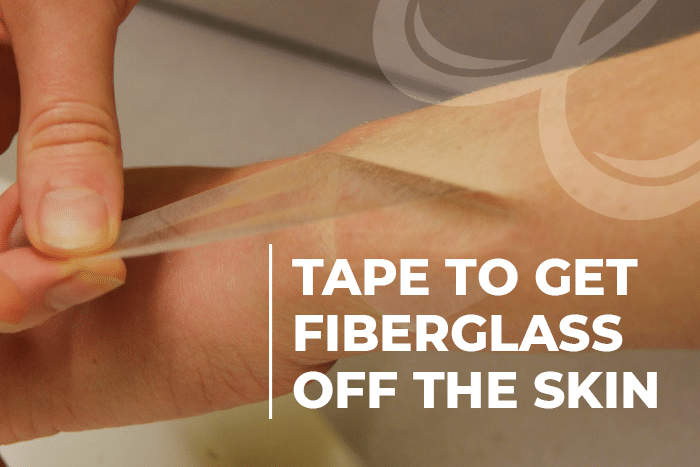
Such an approach can be chosen if the slivers are visible over the surface.
It is good, too, when one doesn’t know how to get fiberglass out of your hand.
- Take a bright lamp or a pocket flashlight, a tape, and a magnifying glass. Try to find a dark-colored tape since the slivers are very fair-colored and will be hardly visible on the transparent or white background.
- Examine the skin to spot the slivers. Don’t wash it, otherwise, the tape won’t stick well!
- Stick the tape over the slivers firmly. It must be stuck really tight!
- Unfasten the tape smoothly.
- Check the damaged zone for any leftover slivers or rub it carefully for any sharpness. If fiberglass in the skin can still be felt, repeat the procedure.
- After removing fiberglass, treat the damaged zone with mild soap.
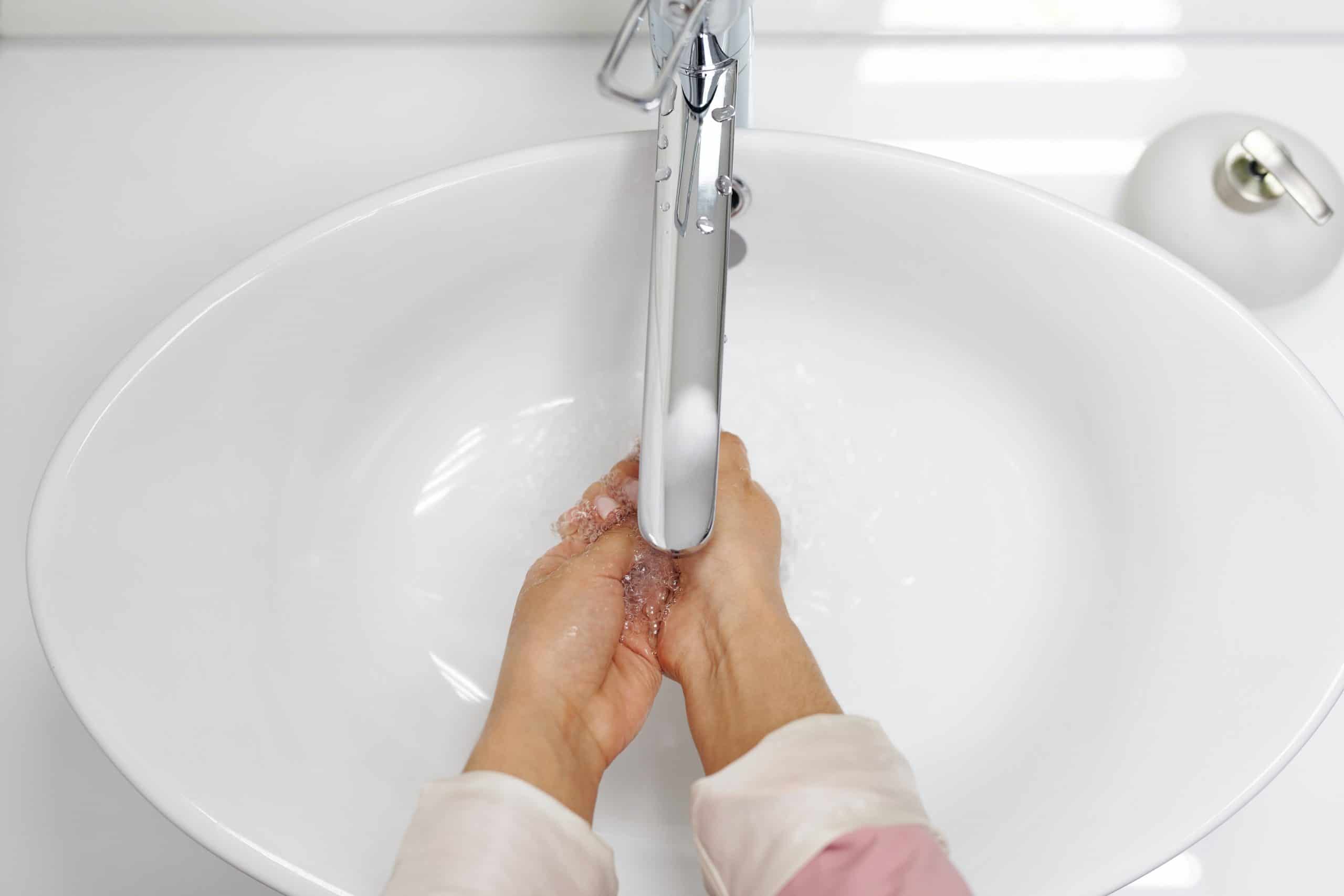
How to pluck fiberglass out of the skin
Even though it sounds like a pain, in fact, it’s not even though we can’t call this procedure pleasant.
- Start with washing the injured zone.
- Don’t rub it to avoid huddling the intruders deeper.
- Find a needle and tweezers, disinfect them.
- Prepare a bright light.
- Drag out the filaments with the tweezers. Act gently to avoid breaking them.
- After you’re finished, wash the injured zone.
Both these fiberglass removal approaches work well only when the splinters can be visible good enough or if they are close to the surface and can easily be pulled out.
How to Pull Fiberglass Out Of the Eye
Fiberglass requires extreme caution when working with it since this material can immediately inject into our skin. As long as the affected area causes a lot of trouble because of itching, it is crucially important to pull out the fiberglass lint.
But what if this material affected eyes?! In this situation, one must be especially careful since eyes are very tender and fragile. The major task is to not damage them while removing the fibers.
- Make use of cold water to apply to the affected area. Warm water won’t help, on the contrary, it can make everything even worse. All because the warm water will open the pores making it easier for the biners to get deeper.
- Apply the liquid to rinse the area that was exposed to a fiberglass “attack”. You can do it either by splashing the liquid with your hands or if such an approach doesn’t work, go for a clean pulverizing bottle. Fill it up with cold water and apply it right angles to the affected area.
- Let the face and eyes drip dry or stay in front of the working fan so that the affected area would dry itself.
- No rubbing is allowed, as well as no other vigorous working on the damaged territory! This can make the fibers get deeper into the eye surface or the skin (in case the lint got onto the eyelid).
- As a variant, try Visine or a lubricant eye drops but don’t go for the liquid meant for removing contact lenses since it can damage the eye!
This is the fastest first-aid approach that can be used when fiberglass damaged your eyes or the skin around them.

Nevertheless, we strongly recommend going see the doctor even if it seems that the problem is solved and no itching and/or pain bothers you anymore. In a hospital, your eyes can be professionally examined for the presence of any slightest signs of fiberglass.
Don’t risk it since it’s about your health!
How do you know that this material ended up in your eye or in the area around it while you were working?
- You can feel strong itching
- Eyes can become red
- There might be the feeling of something irritating the eye from outside or inside as if something small got into it
- The area around the damaged eye may become red
- The damaged area can start aching

To avoid such unpleasant situations, it will be better to dress respectively when working with this dangerous material:
- Have loose-fitting clothing on yourself with long sleeves
- Remember to protect your hands with gloves
- To not breathe in some fibers, always have a mask on your face that covers the mouth and the nose area!
- Wearing goggles with side shields is a must if you have to deal with duct or any other work that requires using fiberglass
- Make use of a small shop vacuum after each wetting the fibers
Protection Measures When Working With Fiberglass
No matter whether you work with this material on a regular basis as a duct worker or you simply renovate or repair your home, remembering certain precautious measures is a must.
- If you have already come in contact with it, even if the small area was affected, rinse the skin with cold water, or with a soapy slightly warm water to remove the lint
- Flush your eyes with water, too, if you know or suspect that some of the fibers got there
- Avoid rubbing the damaged skin/eye since it will make the itching and pain stronger
- Launder the clothing that was on you while working with fiberglass separately from other garments and rinse the laundering machine barrel thoroughly after the wash
Hopefully, these suggestions will help to avoid a close meeting with fiberglass!
Fiberglass FAQ
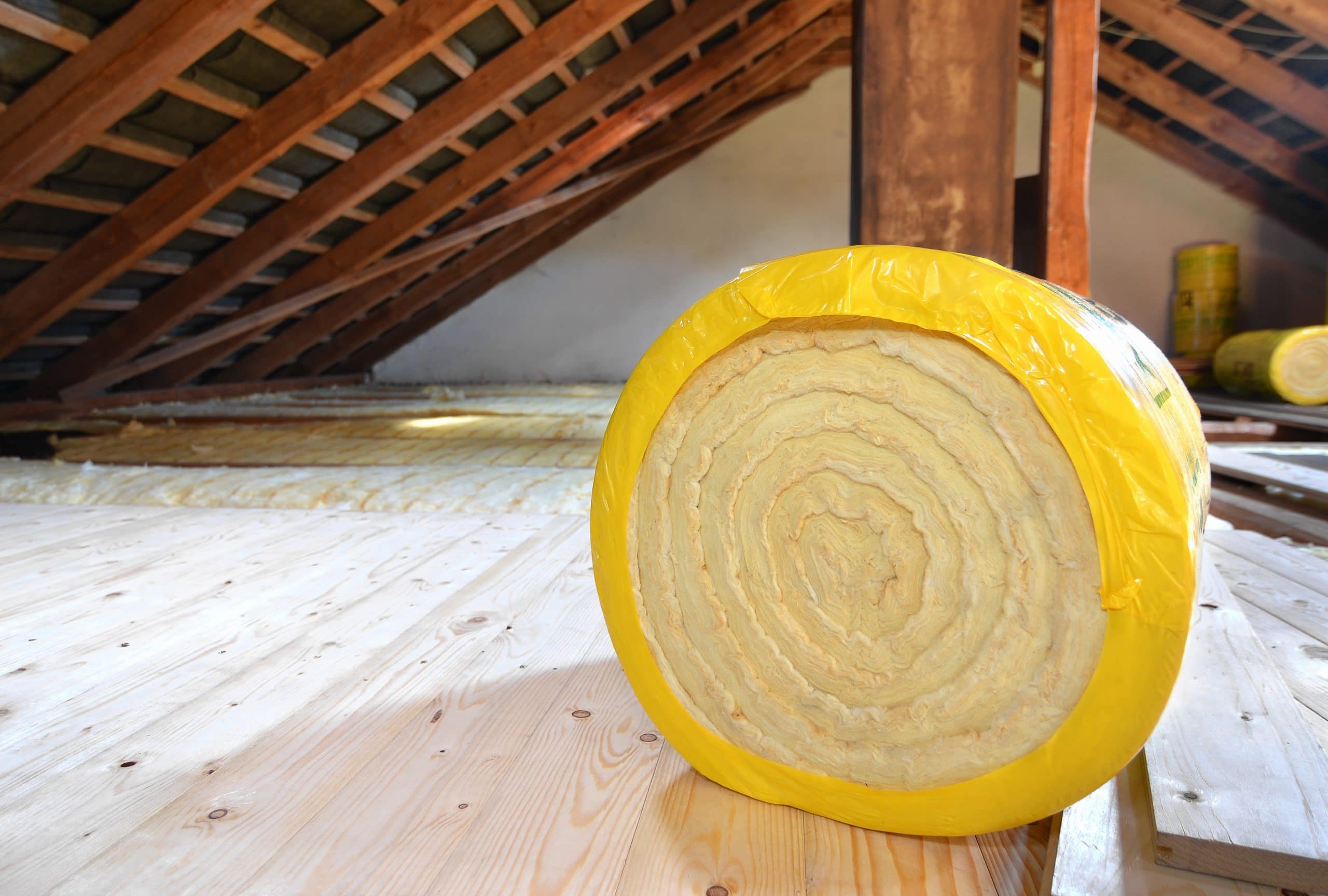
Now everyone have been informed about the basic means for getting fiberglass out of the skin. Nevertheless, knowing some extra information is always a good thing, besides, it can be helpful, too!
Here are the frequent questions regarding how to remove fiberglass splinters. Hope they will be helpful!
- How long does fiberglass stay in your skin?
There is no specific period of time that fiberglass can spend underneath. On the other hand, this material can indeed remain in our body for quite a long time leading to inflammation. To prevent it, see the doctor even if you managed to extract the filaments.
- Will fiberglass come out of the skin on its own?
No. The material is easy to break and stay inside, besides, any moves can make them get deeper and cause serious inflammation.
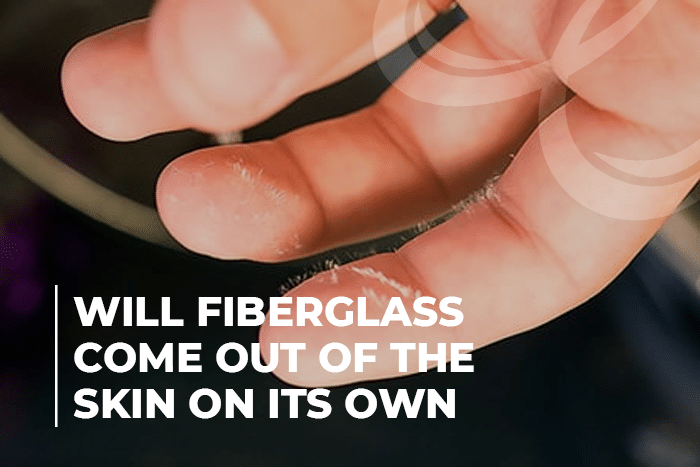
- Is there the best way to remove fiberglass from the skin?
Each method depends on each specific case. The only thing one can do is to extract the filaments ASAP to prevent inflammation or prevent the fibers from getting deeper.
- How to get fiberglass out of hands?
The optimal approach is to go for tape if the fibers’ ends are visible. If not, then help yourself with a needle.
- How to get fiberglass off your body?
Usually, its filaments damage our eyes or can be breathed in. In both situations, never extract them on your own! Go to the hospital instantly to get professional and qualified help!

Great post sir how to remove fiber glass from skin
Thanks, we are happy that you enjoy it=)
We were doing some repairing works and my friend got some fiberglass onto the skin. How do you get rid of fiberglass itch? We are going to see the doctor tomorrow but just to relieve this itching until then? Thanks a lot!
I could suggest using masking tape. Apply it over the affected area and then carefully pull away. The fibers will follow the tape and the itching will disappear almost instantly.
How do you get fiberglass out of clothes? We are all working in special protective costumes but we will have to clean those afterward anyway. Is there a method of safe washing or another kind of cleaning them?
What I usually do is to launder the contaminated clothing separately. No other garments or even cloths! Just the items that were in contact with fiberglass. Use normal detergent and launder according to care labels.
I use tumble dryer afterward but it’s ok to hang-dry, too.
And yes! Run the wash and rinse cycles on the machine without any soap/detergent after the laundry is completed. Like that, you’ll clean the barrel from any leftover fibers. And wash your hands and forearms, too.
What happens if you leave a glass splinter? I mean not for purpose but accidentally. Will that cause any serious damage?
Well, I guess it will keep on causing irritation and, as a result, it can lead to inflammation since the skin will be irritated and more predisposed to microbes. Go to see the doctor, really, to extract that thing.
I’m always too concerned and worried about infections and other skin issues. We’re now working with fiberglass to repair our roof, and I know this material is dangerous. So I started wondering: what happens if the skin grows over the splinter?
Since that fiberglass is in contact with dust and other non-sterile materials, I guess that the situation you described could lead to infection since the splinter will remain in your body actually. That’s why it’s always better to go to see the doctor even if you think you removed all the fibers from yourself.
I suspect that there’s a fiberglass splinter left in my finger. Will fiberglass splinters work themselves out? Or I still have to go to the hospital to remove it?
This is a hell tricky material and so are its splinters. Unlike a wood splinter, for example, fiberglass one can easily break if you leave it, or get deeper under the skin. My advice is to go to the hospital and get that thing out.
It took a year before the fiberglass splinters started emerging from my right hand and I can not find a doctor or dermatologist or anyone to remove the remaining splinters. It has been VERY painful and exposes me to getting infections and germs due to the open sores.. IF ANYONE HAS ANY IDEAS OR ANYTHING THAT WOULD HELP IT WOULD BE APPRECIATED.. I worked with sheets of fiberglass in the making of windmill blades and we were told we couldn’t wear the PPE gloves as they were leaving a black residue and the cotton gloves would snag. If I knew that I would have to deal with this for more than a year I would not have done it.
How bad is breathing fiberglass dust? I know the splinters can be quite painful and irritating but is there any danger from breathing the dust?
I only know that those can lead to asthma, especially if one works with this material regularly. All because the dust tends to deeply lodge in the lungs.